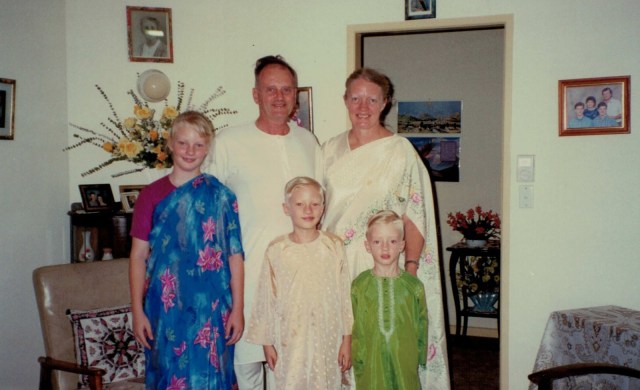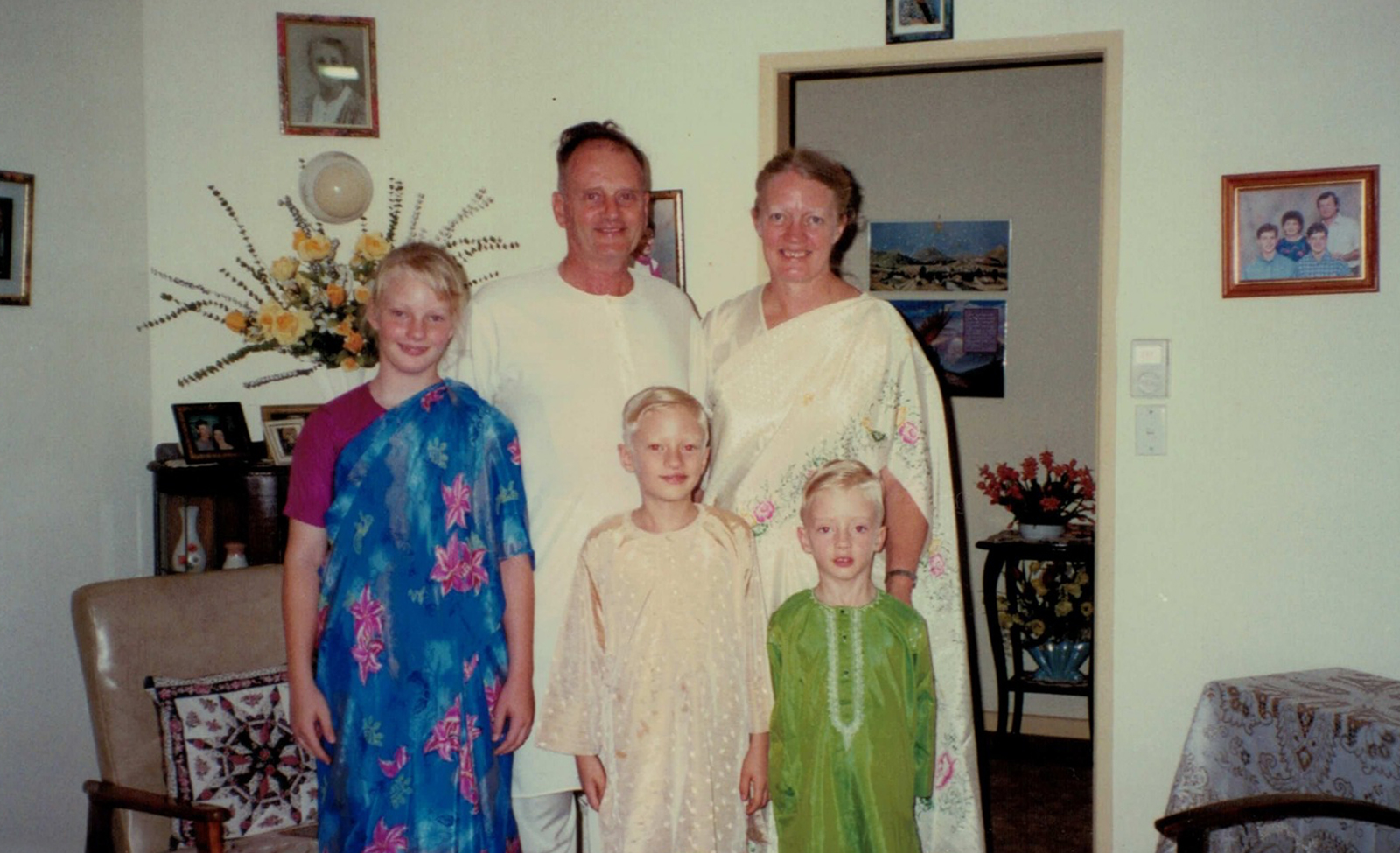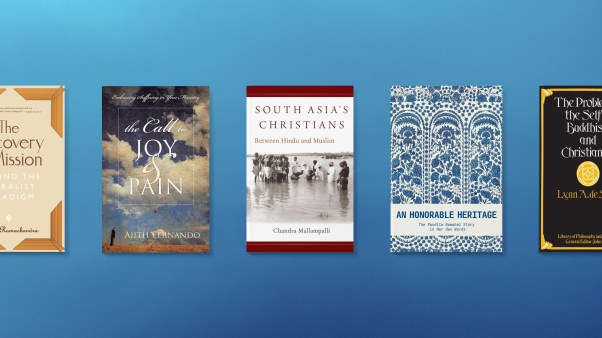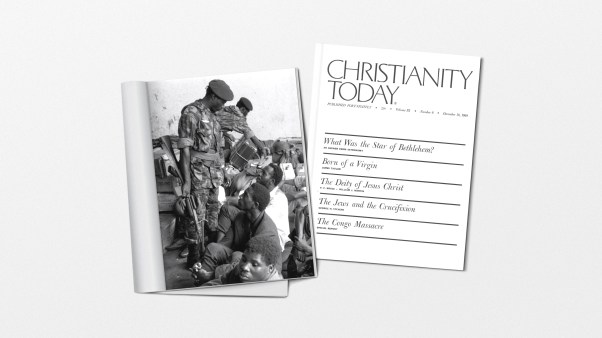Mahendra Hembram walked out of Keonjhar jail in India’s Odisha state in April to a hero’s welcome. Supporters adorned him with garlands and shouted, “Jai Shri Ram!” (“Hail Lord Ram!”). To awaiting reporters, Hembram claimed his innocence after 25 years in prison.
Associated with the Hindu extremist group Bajrang Dal, Hembram had been sentenced to life in prison for burning Australian missionary Graham Staines and his sons—ages six and ten—to death in 1999. Authorities granted him an early release on grounds of good behavior.
Vishwa Hindu Parishad, a Hindu extremist group affiliated with the ruling Bharatiya Janata Party, welcomed Hembram’s release. “It is a good day for us. We welcome the government’s decision,” the group’s joint secretary Kedar Dash told The Times of India.
Many in the Christian community criticized the jubilation at Hembram’s release.
“He is a convicted killer, convicted in the most horrendous crime, and is now being quietly merged into civil life after a long stay in jail,” John Dayal, activist and spokesman for the United Christian Forum for Human Rights, told CT.
The 1999 murders shocked the world as a mob of Hindu extremists set on fire a Jeep with Staines and his two sons inside. Yet authorities have shortened the sentences of all of the attackers, which some see as a sign of the growing wave of Hindu nationalism in the country. India’s Central Bureau of Investigation initially arrested 51 people involved in the killing. However, over the years, the court acquitted all the suspects except Hembram, Dara Singh, and Sudarshan Hansda, alias Chenchu.
Singh, who was also convicted of two other murders, was initially sentenced to death before judges reduced his punishment to a life sentence. He is currently pleading to be released immediately. Chenchu, who was a minor at the time, saw his sentence of 14 years reduced to 8.
Subhankar Ghosh, a close friend of the Staineses and eyewitness of the murders, didn’t feel outrage when he heard of Hembram’s release.
Rather, the response of Staines’ wife, Gladys, after the murders is a model for Ghosh. Gladys publicly forgave the killers and returned to run the leprosy home where her husband had served. Today, their legacy lives on in the remote village where they once lived.
“Even Gladys has forgiven them, so who am I to say that I will not forgive?” Ghosh said.
Graham Staines first came to India in 1965 to work at the leprosy mission of the Evangelical Missionary Society in Mayurbhanj (EMSM). Missionaries first established the home in 1895 after the king of Mayurbhanj, Sri Rama Chandra Bhanja Deo, invited them to come and work with lepers. Bhanj Deo was especially passionate about eradicating the disease, as his daughter suffered from leprosy.
 Courtesy of Subhankar Ghosh
Courtesy of Subhankar GhoshGladys arrived in Mayurbhanj in 1981 as a missionary with Operation Mobilization. There she met Staines, and the two got married two years later. Beyond the leprosy mission, they also served at local churches and held Christian camps to strengthen believers in the area.
Local members of Bajrang Dal were outraged to see people from the Santhal tribe embracing Christianity and believed the missionaries were destroying Indigenous culture. According to a letter Hembram wrote to his sister-in-law after the murder, they were enraged to see villagers eating beef—as cows are sacred in Hinduism—and to see the missionaries distributing sanitary pads and bras to the tribe members.
Things came to a head in January 1999, when Staines, his two sons, and several other Christians organized a five-day church camp in the jungles of Manoharpur village. Ghosh, a botany professor who often served with Staines, had been invited as a speaker. On the night of January 22, 1999, Staines and his two sons were sleeping in their Jeep, which was parked in front of a small church in Manoharpur. Meanwhile, Ghosh and another Christian, Gilbert Venz, slept in a small thatched mud house, about 650 feet away the jeep, according to Ghosh’s unpublished book, Flames of Fire.
Around midnight, Ghosh woke up to the loud sounds of a large crowd screaming, “Maro, maro! Dara Singh zindabad!” (“Kill, kill! Long live Dara Singh!”). He had no idea what was going on, and when he tried to go outside to look, he found attackers had blocked the doors of the huts so they couldn’t get out. It was pitch-dark, he wrote, and the house had no windows, only a small ventilator through which Ghosh saw the vandals deflating the tires of Staines’ Jeep, beating up Staines and his sons, and pushing them into the Jeep when they tried to escape.
He saw villagers running around trying to help the missionary, but members of the mob threatened them and beat them up. As he watched the vandals set the Jeep on fire and his friends being devoured by the flames, he helplessly knelt and prayed.
“We are so sorry that we could not do anything at this hour of death for Graham and the kids,” Ghosh wrote in his book. “We were filled with remorse and sorrow. Our heart was beating vehemently, crying to the Lord, why such a thing has happened.”
Witnessing the heinous crime took a deep emotional toll on Ghosh, who struggled with depression and trust issues. Many of Ghosh’s friends, including some within the Christian community, blamed him for not going out and saving Staines, even though Ghosh had no way out of the hut.
 Courtesy of Subhankar Ghosh
Courtesy of Subhankar GhoshDuring the two-and-a-half-year trial, some lawyers falsely accused Ghosh and fellow ministry workers of killing Staines and then blaming it on the mob.
“The first three [or] four months were unbearable for me,” Ghosh said. “To see someone dying in front of my eyes [who was] doing good service and he was treated this way, I had almost become mad. I would not talk to people.”
Despite his grief, Ghosh believes he needed to accept what happened and forgive the killers. He went on to work at the leprosy mission, as well as to speak in churches and seminaries sharing Staines’ testimony.
“I have to reconcile the fact that Jesus went through all this, so who am I not to accept it?” Ghosh said. “Even in hard times, I have to accept these things. The Scriptures say that God, in Christ, was reconciling the world unto himself. And we are sent to be ambassadors of reconciliation.”
After a furlough in Australia, Gladys and her daughter, Esther, who was 13 at the time of the killing, returned to Odisha, where Gladys served at the leper clinic for five more years before returning to Australia. She told Indian news stations, “I have forgiven the killers, but the law must take its own course.”
For her work in India, Gladys won awards, including the Mother Teresa Memorial Award for Social Justice and the Padma Shri for Social Service, India’s fourth-highest civilian award.
“If we don’t experience the grace of God, we become bitter,” Gladys told CT in a 2003 interview. “We have to turn to God, not to others. Experience forgiveness and forgive others. Grace is available. Once you forgive, there will be healing.”
Gladys, who is now 74, last visited India with her daughter and grandchildren in December 2024.
Even after the Staineses left, their legacy lived on. EMSM now includes two leprosy mission homes, a rehabilitation center, a boys’ hostel named after the Staines boys, and the Graham Staines Memorial Hospital. The hospital was established in 2004 to fulfill Staines’ vision of providing health care to the marginalized people of Mayurbhanj. Although the rate of leprosy has decreased in the past few decades, Odisha continues to report more than 500 new cases a month.
Manoharpur, the remote village in eastern Odisha where the murder took place, has seen a growth in Christianity after the incident, Ghosh said. The village now has three churches, and many residents have accepted Christ.
“Those who had come to attack on that night, there were about 52 people,” Ghosh said. “Out of them, many have come to know the Lord and have joined the church.”
















